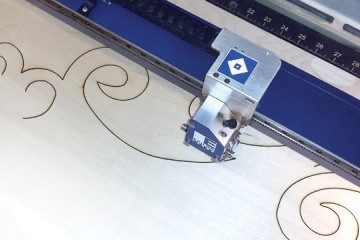Joseph Smith
- Professor Emeritus of Art

Trained at Rhode Island School of Design, Joseph Smith had a variety of work experiences in addition to his years as a working artist-from construction worker and hardware store clerk to cabinetmaker and carpenter, all of which have influenced his own sculptural work. He shows a particular affinity for “unsung” materials like exterior-grade plywood, concrete, corrugated cardboard, plate glass to articulate ideas of permanence and impermanence, anonymity and the personal. Smith is currently working on large indoor installations using recycled glass and wood as well as constructing smaller sculptures of a more intimate scale.
Smith's work has appeared at the First Street Gallery in New York City (2001); the 55 Mercer Street Gallery in New York's Soho neighborhood (2000,02,04,06); the Saul Kofler Gallery in Providence, Rhode Island (2000); at Dartmouth College (2000); and over the last three decades in galleries from Long Island to Los Angeles. He is in a number of private collections including the Edward Broida and Barbara and Eugene Schwartz collections. The New York Times has characterized the sculptor's oeuvre as being "about relationships that seem at the same time provisional and inevitable ... quietly whimsical, seriously perverse." Citing Smith's material-mixing style, his "flexibility in playing with scale," and his "tremendously dry sense of humor," Anthony Lee, associate professor of art, explains that Smith's work "meditates on a modernist inheritance, but it goes far beyond that.
"Far beyond," might also be a good way to describe Smith's artistic influences, which he lists as "Dadaist, Russian constructivist, surrealist, cubist, pop, and outsider; storytellers and writers, but (I hate to admit it) mostly painters; sleight-of-hand artists, good design, bad carpentry, ceramics, furniture makers, tools, science illustration, and certain collections of objects for no apparent reason."
A recent installation by students in Smith's Sculpture I class prompted people walking by MHC's Abbey Chapel to ponder the question, “If God were to cast a shadow, what would it be like?” Mapped out in yellow plastic survey tape-like the kind used to mark a police line-on the lawn of the venerable edifice was an outline of the chapel and a placard that read: “Step not on the shadow of God.” The artwork-the product of an assignment calling for tape-wielding students to create a work in conversation with an existing natural or architectural space-was emblematic of Smith's approach to teaching. “Students work best when they are asked to think dynamically,” Smith says. “They surprise themselves by the forms that their thinking takes and sometimes it is a revelation to me too."
Areas of Expertise
Studio art; sculpture
Education
- M.F.A., Rhode Island School of Design
- B.F.A., University of Louisville
